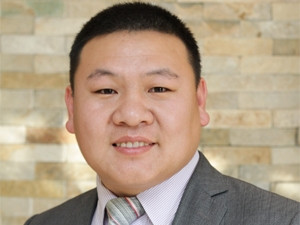
Telecoms giant Huawei has its sights set firmly on South African soil, with the company's 2015 strategy including a significant bolstering of its local workforce, advanced wireless solutions and local deployment of its software-defined network (SDN) tools.
The ICT solutions company and smartphone maker says SA - which it calls Africa's ICT hub - is its most important market on the continent. While many other companies in the space are carrying out retrenchment programmes for leaner local operations, Huawei plans to hike its South African staff complement by 50% over the next five years.
David Wang Shunli, director of public affairs and communication for Huawei Eastern and Southern Africa region, points out the company has had an African presence for about 13 years now, and SA is one of the group's chief growth markets.
"We have over 7 000 employees, with 1 000 of these in SA, about 60% of which are South African. Over the next five years, we want to increase that number by 500 employees for SA," says Wang Shunli.
R&D focus
Roland Sladek, VP of international media affairs, says Huawei's business is divided into three units, with the carrier business making up about 70%, device constituting 25% and the remaining 5% being made up by its enterprise unit. The concept that drives each of these divisions, says Sladek, is innovation.
Wang Shunli says research and development (R&D) is a big area of focus for the company, with 13% of the firm's revenue being put into this last year. "Every year we put 12% to 13% of our revenue into R&D and we have 16 global R&D hubs. Also, about half of our employees are in R&D."
Two of the innovations the company has invested time and money in this year are the LampSite - basically a small cell, or indoor coverage solution - and carrier aggregation, a technology that makes true 4G (LTE-Advanced) speeds possible.
Huawei intends launching its LampSite in SA soon, according to Cao Ming, VP of Huawei's carrier business for Eastern and Southern Africa. "The timeframe will depend on demand. We are mainly targeting the operators and small and medium enterprise."
As for carrier aggregation, some of SA's telcos have successfully tested the technology - including Vodacom and Telkom - although at this stage there is not a wide enough range of devices that support it, nor is the necessary spectrum (mainly 2.6GHz) available.
In September, Huawei said it was scoping the local market to the end of deploying its next-generation SDN tools - the Huawei Agile Network - in SA in the near future.
Device plans
As for its position in the local smartphone war, Huawei, which currently has a relatively marginal amount of market share with its flagship Ascend P7 device, has ambitious plans. In fact, the company's MD of consumer business Peter Hu, says it aims to be among the three leading smartphone brands in SA within the next three years. This year, says Hu, 2.5 million pieces were moved in Africa, a million of which were in SA. He says the company wants to double this figure in 2015.
Despite the local popularity of its R450 Ascend Y220 smartphone, the company does not plan to focus on the low-cost smartphone arena, where many other players have competing products in the sub-R1 000 category. "Huawei is positioned in the mid- to high-end." Sladek says this makes sense, given what he says is a "rising middle class" in SA.
Huawei is set to launch its latest flagship smartphone next Tuesday, at an event in Cape Town. While Hu is reticent around specifics, he says it is not the successor to Huawei's current top smartphone the Ascend P7, but will be in a "new segment" altogether.
Share